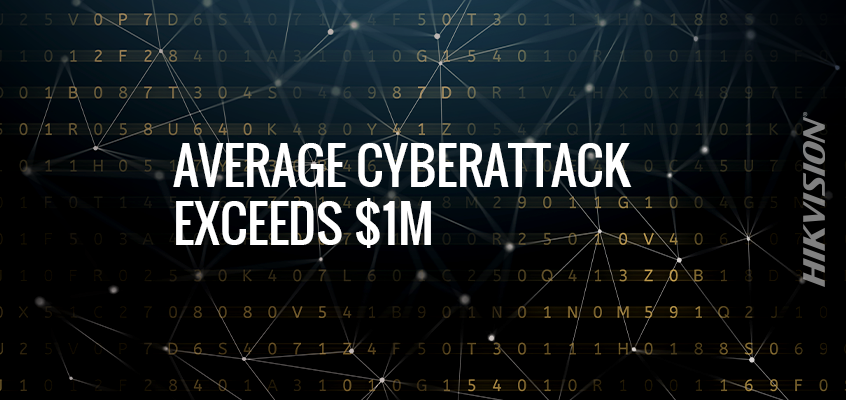Radware Report Finds Average Cyberattack Exceeds $1M
Hikvision Examples of Password Vulnerabilities, Security Breach
The 2018-2019 Global Application and Network Security report by data center cybersecurity provider, Radware, says that the average cost of a cyberattack exceeds $1 million, according to an article in Security magazine.
“While threat actors only have to be successful once, organizations must be successful in their attack mitigation 100 percent of the time. A cyberattack resulting in service disruption or a [security] breach can have devastating business impacts. In either case, you are left with an erosion of trust between a brand and its constituency,” said Anna Convery-Pelletier, Radware CMO, in the article.
Operational/productivity loss was the top effect of cyberattacks according to respondents, followed by negative customer experience as a result. Forty-five percent of businesses surveyed reported that service disruption was a goal of cyberattacks. Thirty-five percent stated that the goal of the attack was data theft.
The article also stated that cyberattacks are becoming more frequent and more effective: “78 percent of respondents hit by a cyberattack experienced service degradation or a complete outage, compared to 68 percent last year. Even with these numbers, 34 percent of respondents do not have a cybersecurity emergency response plan in place.”
Additional findings from the report included:
- The biggest concern among businesses surveyed is data leakage and information loss.
- Thirty-four percent of respondents believe application vulnerabilities will become a major concern in the next year. Per the article: “More than half (56 percent) reported making changes and updates to their public-facing applications monthly, while the rest made updates more frequently, driving the need for automated security.”
- Forty-eight percent of businesses surveyed explored machine learning solutions to provide quicker response times and improved security.
Click here to read more about the study.
Examples of Password Vulnerabilities, Security Breach
In the HikWire blog, “Security Magazine Outlines Examples of Password Vulnerabilities, Security Breaches,” Hikvision summarized the publication’s piece “The Plight of the Password,” and offered its own tips to improve password strength and reduce vulnerabilities. Quoting the Security magazine article: “Some of the largest public breaches have occurred in the past few years, revealing security vulnerabilities that exposed billions of pieces of personal data users assumed were protected behind the veil of their passwords.”
Hikvision’s cybersecurity director provided the following six tips to improve passwords in the blog:
- Create a long, strong password: Develop a strong password, which includes multiple character sets such as uppercase, lowercase, numbers and special characters. Make it long—eight characters or more. Davis added: the longer the password, the better.
- Change default passwords: It’s critically important to change default passwords on all devices, and set a complex password (see tip number one).
- Use a password management tool: As you create more complex passwords that different from site to site, you may find it difficult to remember them. A best practice is to use a “password management tool,” which can help you generate and retrieve complex passwords.
- Where possible, enable the lock-out feature: Enable the password lock-out feature after a certain number of invalid login attempts, and receive notifications of those attempts. This prevents brute-force password attacks.
- Where possible, enable multi-factor authentication (MFA): Enable MFA, especially where you have only a username and password protecting sensitive data. Many sites support MFA but not many people are aware that they have the option to enable MFA. The following site lists popular sites and shows how to enable MFA on those sites: https://twofactorauth.org/.
- Assign unique, individual usernames: Ensure individual accountability by assigning everyone their own unique username and password, with no sharing of accounts allowed.
Click here to read the entire blog.

